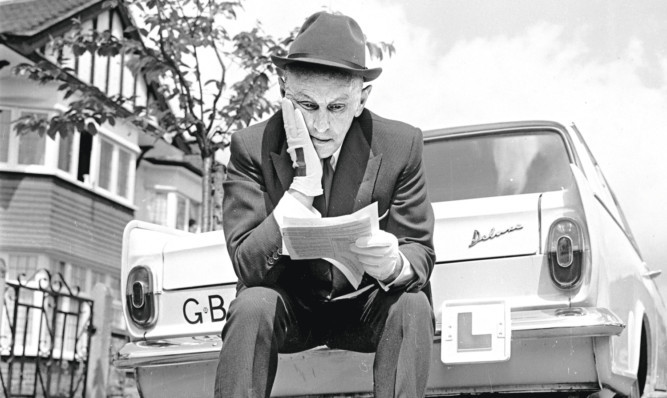
One of the most nerve-racking experiences we’re ever likely to face is taking our driving test.
Depending on the result, those 40 minutes can give you untold freedom or condemn you to months or years of public transport and catching lifts.
June 1 marks the 80th anniversary of compulsory driving tests in the UK. And as the roads became busier, cars faster and distractions greater, the test developed over the decades to reflect those changes.
We take a steer through the major milestones of the UK’s driving test.
1930s
The Road Traffic Act 1934 introduced testing for new drivers after more than 7,000 people were killed on the roads in 1933 and 216,401 were injured, despite there being only 1.8 million cars. It became compulsory on June 1, 1935 and skills tested included emergency braking, pulling away on a steep hill, the three-point turn and reverse manoeuvre. First to pass was a Mr R. Beere from London, who was approved by one of 250 examiners. Around 246,000 candidates applied, with a 63% pass rate. On September 2, 1939, driving tests were suspended for the duration of the Second World War.
1950s
In 1950 the pass rate fell to 50%. The test fee doubled from 10 shillings (50p) to £1 in October 1956. Testing was suspended again between November 1956 and April 1957 during the Suez Crisis. Learners could drive unaccompanied and examiners helped administer petrol rations in the period.
1960s
The distance a driver must be able to read a number plate was changed to 67ft from the previous 75ft. The test fee went up to 35 shillings (£1.75) in 1968. Changes made to the test in 1969 included a separate driving licence group for automatic vehicles and a ban on cars with dual accelerator controls.
1970s
A total of 3,500 people were prosecuted for having a forged licence or wrongfully attempting to obtain a licence. There was a huge backlog of tests as demand rose by 20% in 1972 and a further 15% the following year. Green paper licences replaced the old red booklets in 1973 and full licences later became valid until the age of 70. Candidates no longer had to demonstrate arm signals in tests from May 1975.
1990s
From May 1 1990, examiners provided an explanation of faults committed. Later that year, anyone accompanying a learner had to be at least 21 and a driver for three years. One of the biggest changes was the introduction of the theory test in July 1996, replacing questions asked about the Highway Code during the practical test. Within three months the pass mark was raised from 26 out of 35 to 30 from 35. A law stated that if a new driver racked up six or more points within their first two years of driving, they would lose their licence and have to re-sit the theory and practical tests.
Waiting times between tests were also introduced for unsuccessful candidates, with a minimum of 10 days’ wait for car and motorbike drivers. There were major changes to the practical test in 1999. It was lengthened to 40 minutes, candidates committing 16 minor faults or more were now failed whereas there was previously no limit on minor faults, and only one in three would be asked to perform an emergency stop.
2000s
Hazard perception was introduced to the theory test, using video clips to test drivers’ awareness, and the number of questions for the theory test (now touch screen) rose from 35 to 50, with 43 required for a pass. Show me and tell me vehicle safety questions, like how would you check the engine oil level, were added to the practical test. From 2010, candidates were encouraged to take their instructor with them on their test. In the same year, independent driving where candidates have to drive for 10 minutes making their own decisions was brought in.
The future
Twenty driving test centres around the UK are piloting a new practical exam that will better reflect real driving, according to the DVSA. Changes being tested include following a route on a satnav for 20 minutes, replacing reversing round a corner with reversing out of a space, demonstrating how to operate the rear-heated windscreen, and pulling up on the right before rejoining the flow of traffic. Earlier this month, 17-year-old Grant Ferguson, from Bishopbriggs near Glasgow, became one of the first to pass the new-style test. If the trial becomes permanent, it will be one of the biggest changes in the driving test’s history.
Related stories:

Enjoy the convenience of having The Sunday Post delivered as a digital ePaper straight to your smartphone, tablet or computer.
Subscribe for only £5.49 a month and enjoy all the benefits of the printed paper as a digital replica.
Subscribe